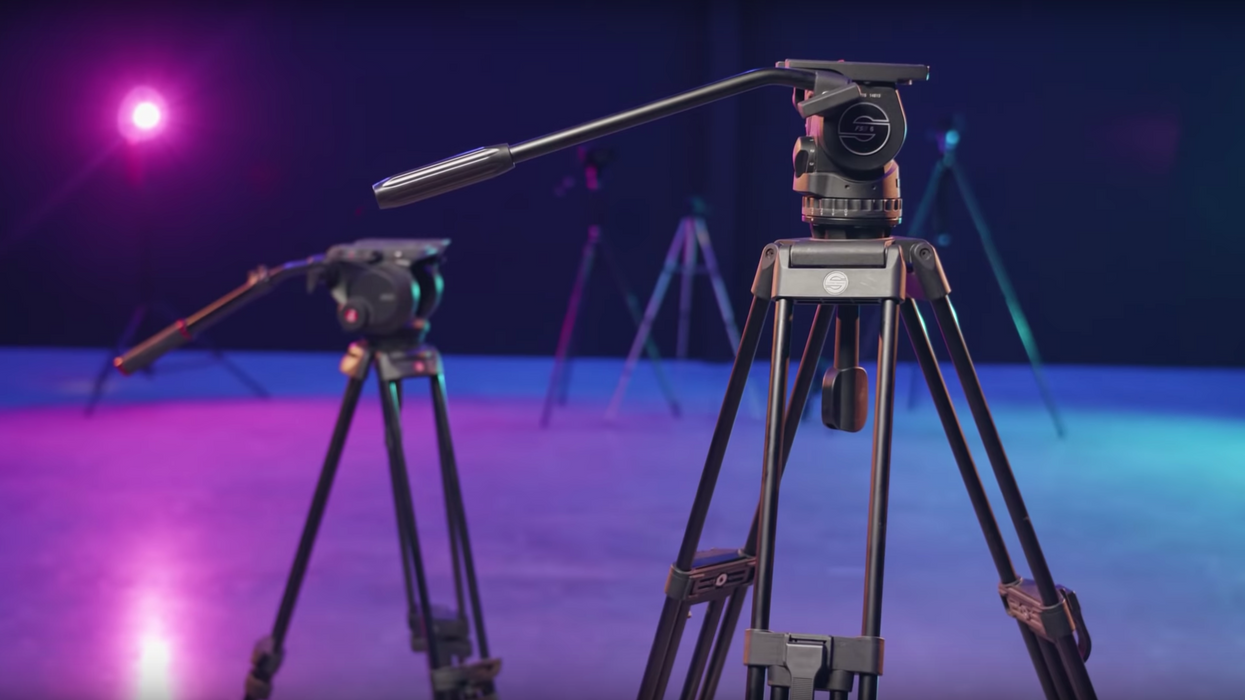13 Essential Tips for Using Your Boring Ol' Tripod
Tripods are the stodgiest of all camera equipment, but they're also one of the most important.

Yeah, back in the days of old, the tripod was the bee's knees, mobilizing those ginormous cameras to the delight of all. But, as cinematic technology continues to advance, it has garnered a reputation for being, well, kind of boring. I mean, I get it. A tripod holds your camera in one place while a drone takes it through trees and over friggin' majestic mountains. But you'd be remiss not to focus on the tripod basics.
However, there are a lot of ways to not only utilize this seemingly uninteresting and straightforward piece of gear but also a lot of ways to do so correctly and incorrectly. In this video, Jordy Vandeput of Cinecom goes over 13 helpful tips that will get you using your tripod like a pro. Check it out below:
Again, this isn't the sexiest topic in the world, but if you're going to be using a tripod, regardless of it's on a professional film set or not, you're going to want to learn best practices and some helpful tricks so you don't end up injuring yourself, someone else, or your camera. Here are the tips Vandeput discusses in the video:
- When storing your tripod, loosen all friction points to lengthen their lifespan.
- When not using your tripod, either keep it upright with its legs open or lay it down with its legs closed. Don't stand it up with its legs closed.
- If you need to move your tripod with your camera mounted to it, lock the pan and tilt knobs, close the legs, and set the handle over your shoulder.
- Remove your camera if you need to travel long distances, though.
- Extending the bottom section of your tripod's legs first is more convenient, but extending the top section is more sturdy.
- If your tripod is a little off balance and wobbly, hang a weight from the center hook (if your tripod has one).
- For faster leveling, aim your bubble to one side by adjusting one leg, and then center the bubble by adjusting another. That way, you're only adjusting two legs instead of three.
- Loosen your tilt to adjust your camera's balance. (This is a good step to take in case your tilt knob comes loose.)
- Twist your handle upside down to give yourself more control over camera movement.
- To hone your panning and tilting skills, Vandeput suggests taping a bunch of numbers on a wall and practice moving your camera from one number to another.
- Shooting with "loose friction" is a great way to get handheld camera movements while using a tripod.
- Experiment! Try this stuff and this other stuff.
Got any tripod tips? Share them down in the comments.
If you're looking to buy a good tripod, we break down the best tripods for filmmakers here, plus we have a great DIY hack for storing your tripods and c-stands!
Source: Cinecom

 No Film School's coverage of
No Film School's coverage of 









